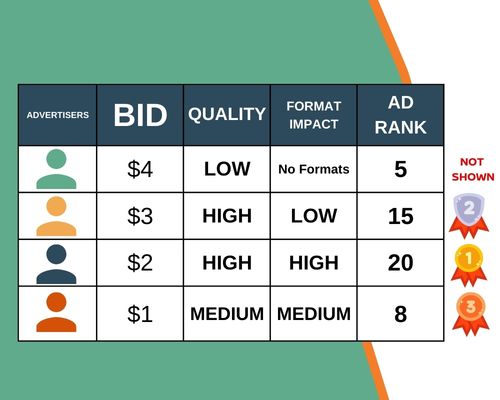Effective Search Engine Marketing Strategies
Do you ever find yourself wondering if there’s a better way to reach and engage your customers online? You’re not alone. The truth is, search engine marketing (SEM) can be an incredibly effective way for businesses of all sizes to extend their reach and increase conversions.
In this comprehensive guide, we’ll take a deep dive into the world of SEM – from platforms like Google Ads and Bing Ads, to best practices for creating and optimizing campaigns.
Businesses are constantly looking for new ways to stay ahead of their competition in today’s digital landscape. But with so many options available, it can be hard to know which strategies will give them the biggest return on investment – and there’s where we come in!
This guide aims to provide readers with a complete picture of SEM – enabling them to leverage its power more effectively – while offering practical tips they can be used immediately.

Benefits Of SEM
Search engine marketing (SEM) is a powerful tool for businesses looking to reach their target audience. With SEM, you can create an ad campaign targeting the people most likely to be interested in your product or service, build rapport and ultimately warm them up to what you offer.
By utilizing pay-per-click (PPC) bidding and other strategies, your business can maximize its visibility on search engines like Google and Bing. With SEM, you have complete control over how much money you spend and what ads are shown to your potential customers.
Ideally, you’d want to setup campaigns with specific budgets, timeframes and bids so you never go over budget or waste time running ineffective ads. Lets not forget, you also have access to detailed analytics about who’s viewing your ads, which helps you optimize them even further.
By using SEM, businesses can get ahead of the competition by reaching out directly to those customers most likely to convert into paying customers. It’s one of the best ways to grow a business quickly without worrying about spending too much or wasting resources on ineffective tactics.
So if you want to ensure that your digital advertising efforts yield maximum results, we recommend setting up a sales funnel of some sort, but if that’s not feasible, you can still expect to see -some- results.
Search Engines And Bidding
Bidding Strategies are one of the most important aspects of search engine marketing, and it’s essential to understand how to maximize your ROI when it comes to bidding.
Relevance and Quality Scores are two metrics that you should be tracking to make sure you’re getting as much as possible out of your campaigns.
Budget allocation is another key factor to consider in search engine marketing – you want to ensure your budget is being utilized efficiently.
With the right bidding strategies, you can get the most out of your campaigns and maximize your ROI.
Relevance and Quality Scores will indicate how effective your campaigns are, and you can use that data to make adjustments and optimize.
Finally, budget allocation is essential for getting the most out of your search engine marketing campaigns – you should look for opportunities to reduce costs and maximize return on investment.

Bidding Strategies
Bidding strategies are one of the most important aspects of search engine marketing.
When bidding on keywords, you must have a comprehensive strategy considering your unique needs and goals.
The first step is conducting thorough keyword research so you can identify the best terms for targeting your ad groups.
Once you’ve identified those terms, you’ll want to determine how much you should bid on each keyword or phrase by taking part in the search engine’s ad auction process.
This will help ensure that your ads appear prominently when potential customers search for your offer.
It’s also important to consider other variables like quality score and competition when creating an effective SEM campaign – both of which can be affected by proper search engine optimization techniques.
By following these guidelines, you’ll be well-equipped to make informed decisions about where and how much to bid on certain keywords.
With the right strategy in place, you’ll be able to reach more potential customers than ever before!
Relevance & Quality Scores
Once you’ve identified the right keywords, it’s time to focus on relevance and quality scores.
Google’s auction process rewards ads with higher relevancy and better click-through rates (CTR).
The more relevant your ad is for a given keyword or phrase, the higher its Quality Score will be—and that means you won’t have to bid as much to get seen by potential customers.
To maximize your Quality Score and ensure that your ad appears prominently when someone searches for what you offer, make sure to use SEO techniques like optimizing title tags and meta descriptions so they match up closely with each of your search ads.
You should also consider creating highly targeted campaigns based on user intent so your ads are always tailored to their needs.
With this approach, you can rest assured knowing that every penny spent is helping drive qualified leads directly to your business.
Budget Allocation Strategies
Once you’ve optimized your campaigns for the best quality score, it’s time to turn your attention to budget allocation.
With paid search engine marketing (SEM), there are a few different strategies for allocating your advertising budget. One of the most popular methods is setting up keyword-specific budgets so that each SEM campaign or ad group has its budget based on how much money can be spent on specific keywords and phrases. This way, you can tweak bids to maximize visibility while still staying within a certain cost range.
Another option is using Bing Ads’ Dynamic Budget Allocation tool, which automatically allocates more resources towards higher performing ads and adjusts bids based on current market conditions. By leveraging these tools, you’ll get the most out of your search engine results page (SERP) presence without overspending on any keyword or phrase.
Additionally, if you’re running multiple campaigns simultaneously, regularly review their performance and adjust as needed to ensure maximum ROI from your entire advertising budget.
Keywords And Ad Rank
When it comes to search engine marketing (SEM), keywords and ad rank are two of the most important elements.
Keyword research is essential to understanding which terms are most relevant to your business and to determining what search volume they have.
Ad rank is calculated based on a combination of factors, including the keyword bid, quality score, and the expected impact of ad extensions and formats.
Quality score is a metric assigned to each of your keywords to measure their relevance and quality. It’s determined by a number of factors, including the click-through rate (CTR), the relevance of the keyword and ad text, and the landing page experience.
Knowing how to optimize these elements is key to improving your ad rank. With the right approach, you’ll be able to increase your ad rank, get more clicks, and generate more revenue.

Keyword Research
Finding the right search terms for your marketing campaigns can be a daunting task, but it doesn’t have to be. Keyword research is one of the most important aspects of any paid advertising strategy and there are several techniques you can use to find the best keywords for your campaign.
For starters, start by looking at what customers are already searching on search engines (referred to later as the SERP). This will give you an idea of which query types are popular in your market and help guide you as you narrow down your keyword list.
Additionally, look into industry-specific terms that could further refine your targeting capabilities – these may not show up in broader searches, so they’re worth exploring!
Finally, take note of how competitors are using their keywords – this can provide valuable insight when it comes to building out the rest of your marketing campaign. With some due diligence and strategic thinking, understanding how to effectively use keywords to optimize ad rank and drive more targeted traffic is well within reach.
Ad Rank Calculation
Once you’ve identified the best keywords for your marketing campaigns, it’s time to think about how they’ll impact ad rank. What is Ad Rank, you ask? Well, Ad rank is a critical metric in paid search that determines where your ads will appear on search engine results pages (SERPs).
Google Ads and Bing Ads both use variations of the same algorithm to calculate ad rank, but there are some nuances worth noting.
In general, ad rank is determined by several factors such as bid amount, keyword relevance and expected click-through rate (CTR) – all of which play into determining whether or not a given campaign will be successful.
When setting up SEM campaigns, make sure to keep these important metrics in mind.
You want to ensure that each keyword you’re targeting has high relevance so that it can effectively contribute towards improving your overall ad rank.
Additionally, aim for higher bids than competitors when possible since this could give you an edge over them in terms of SERP placement.
Finally, focus on increasing CTRs by optimizing creative assets like headlines and descriptions – this may require testing different versions until you find what resonates with users most!
By taking all of these factors into account, you’ll have a better chance at achieving success with any digital advertising initiatives you undertake.
Quality Score Determination
Once you’ve identified the best keywords for your SEM campaigns, it’s important to understand how Quality Score is determined as well. Google Ads and Bing Ads both use variations of the same algorithm to calculate Quality Score – but there are some nuances worth noting.
In general, Quality Score will be based on several factors such as keyword relevance, expected click-through rate (CTR), ad quality, landing page experience – all of which play into determining whether or not a given campaign will be successful in achieving its objectives.
The most important factor when it comes to Quality Score determination is keyword relevance. You want to make sure that each keyword you’re targeting has high relevance so that it can effectively contribute towards improving your overall score on Google search and other SEM ads.
Additionally, aim for higher bids than competitors when possible since this could give you an edge over them in terms of SERP placement. Finally, focus on optimizing creative assets like headlines and descriptions – this may require testing different versions until you find what resonates with users most!
By considering all of these factors and adjusting your SEM strategies accordingly, you’ll have a much better chance at success with any digital advertising initiatives you undertake.
Remember: no matter how great your content is, if the user experience isn’t optimized, then they won’t stay around long enough to convert.
Strategies For Successful SEM
When it comes to search engine marketing (SEM), there are a few strategies that can help you succeed. A successful SEM campaign requires the right mix of SEO and Paid Search Advertising and understanding what product or service your audience is looking for.
At its core, an effective SEM strategy should target the right people with relevant ads at the best time possible. To do this, you need to understand your target market and create targeted campaigns based on their interests and needs related to your product or service.
You also need to ensure that your website is properly optimized for both organic search results and paid to advertise – something known as “SEM & SEO”.
Finally, when launching a new search engine marketing campaign, it’s important to track progress to measure success and make necessary adjustments. This includes tracking key metrics such as impressions, clicks, conversions, CTRs (click-through rates) etc., so you know exactly how effective each ad is performing and where improvements can be made.
Tools To Manage Your SEM Campaign
If you want to bid for the top spots in Google Ads and Bing Ads, search engine marketing (SEM) is essential. SEM enables you to create and optimize campaigns to help you achieve your online business goals.

To build a successful SEM campaign, it’s important to have the right tools at your disposal. Fortunately, plenty of useful resources are available to help those who use SEM. From keyword research tools that can provide insights into what terms potential customers may be searching for to automated bidding strategies that minimize manual work while still allowing you to fine-tune bids for individual keywords – there are options out there for everyone.
The best way to ensure you’re using all of the available tools is to take advantage of specialized software designed specifically for managing SEM campaigns. These programs allow users to easily track performance metrics, adjust bids on the fly, automate optimization tasks, and more – so they can focus on creating great content instead of wasting time trying to figure out how everything works.
With this type of software, SEM becomes much easier and more efficient than ever before!
Frequently Asked Questions
What Is The Average Cost Of Running A SEM Campaign?
It’s no secret that running a search engine marketing (SEM) campaign can be costly, but how much exactly?
The average cost of an SEM campaign is hard to pinpoint since it depends on the industry, budget, and strategies implemented.
However, with careful planning and implementation of best practices like optimizing campaigns for specific keywords and targeting potential customers across multiple channels, you can easily hit your desired ROI without breaking the bank. We recommend a minimum spend of $250, but the sky’s the limit.
How Often Should I Optimize My SEM Campaign?
Optimizing your SEM campaign is important to achieving success. It would help if you aimed to optimize your campaigns on a weekly basis in order to ensure you’re getting the most out of them.
Monitor performance metrics like click-through rate, cost per conversion, and return on ad spend regularly – these are key indicators that will show whether or not changes need to be made.
Try testing different strategies within each campaign every so often – this could include changing up keywords, optimizing bids, or even using new types of ads altogether.
Taking the time to analyze and improve your campaigns can pay off big time!
How Can I Ensure My SEM Campaigns Are Reaching The Right Audience?
Figuring out who your target audience is and making sure you’re reaching them with your SEM campaigns can be daunting. But if you use the right tools, you can ensure that every campaign brings in the best possible results for your business.
By using Google Ads and Bing Ads targeting features such as demographics, interests, locations, and behaviours, you’ll be able to hone in on exactly who your ads should reach.
Additionally, creating custom audiences through remarketing lists will help keep those valuable leads returning time after time.
With these strategies at hand, you can rest assured that the right people are seeing each of your SEM campaigns!
What Are The Most Common Mistakes To Avoid When Running A Sem Campaign?
Running a successful SEM campaign takes time, effort, and knowledge. But even the most experienced PPC marketers can make mistakes – some of which can be costly for your bottom line.
Common missteps include:
- Not setting realistic goals
- Failing to define success metrics
- Bidding too low or too high
- Neglecting to test keywords and ad copy variations
- Ignoring negative keywords (for real!)
- Not taking full advantage of all available targeting options.
Avoid these common pitfalls by doing your research ahead of time and tracking your results carefully so you can tweak campaigns as needed.
How Long Does It Take To See Results From A SEM Campaign?
Picture this: You’ve just launched a paid search advertising campaign, and you’re anxiously awaiting the results.
But how long will it take to start seeing those coveted clicks?
The answer may surprise you – while some campaigns can start showing returns almost immediately, others might take weeks or months to reach their full potential.
As with most things in life, patience is key in SEM campaigns; there’s no one-size-fits-all solution for success, so be prepared to adjust your strategy accordingly as you track progress.

Conclusion
SEM campaigns can be a powerful way to drive traffic and conversions, but it takes time, effort and patience to see the results you want.
To maximize your success with search engine marketing, stay focused on making frequent optimizations that target the right audience, avoid common mistakes and ensure you’re getting value for money.
With these best practices in mind, I’m confident you’ll soon be reaping the rewards of well-executed SEM campaigns!

